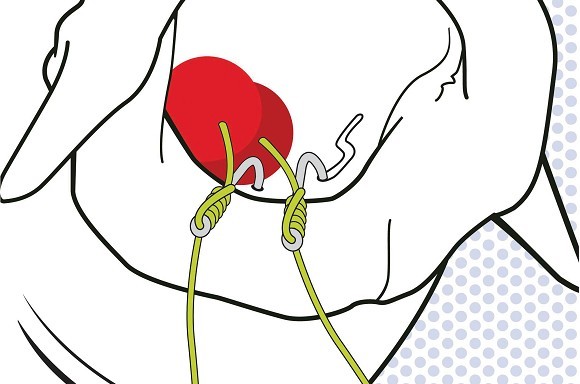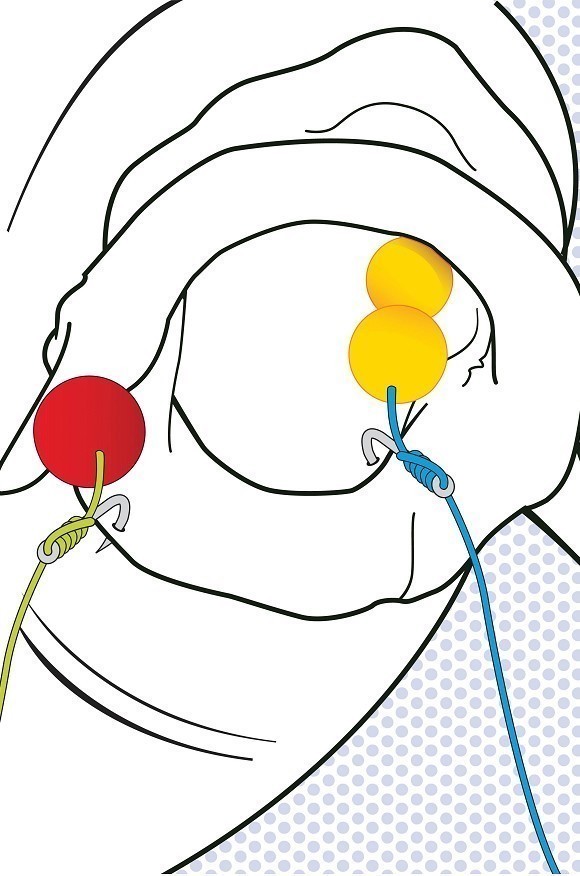
Understanding hook holds: Part 1
Understanding where you've hooked your latest brute in the mouth will tell you a lot about how your rig is performing, as Jason Hayward will now explain...
Hook Hold 1
Fish hooked in the bottom lip, not too close to the edge, up to one-inch inside in the mouth, dead in the centre.
Evaluation
“This is just about as perfect as you can get it! This hook hold will be as secure as you can get in the carp’s tough bottom lip, therefore causing as little damage as possible.
“Fish hooked in this manner indicate a confident pick-up, with the rig mechanics working well. This is also an indication that your baiting situation is probably spot on as well. DON’T CHANGE ANYTHING!”
Hook Hold 2
As before but with the hook further back inside the mouth, but not necessarily in the centre, possibly with some evidence of the hook tearing before finding a more secure hold nearer the lips.
Evaluation
“This is trickier to evaluate. It could represent a confident feeding fish and/or it could be that the fish has cautiously sucked in/eaten the bait, before slowly moving onto the next food item. This type of hook hold is common when fishing with a spread of bait, normally boilies, with a carpet of small particles. This is often a good secure hook hold, but to improve it further, try lengthening the Hair slightly and/or shortening the hooklink an inch or two.”

Hook Hold 3
Hooked on the edge of the lips, not securely hooked.
Evaluation
“This is where it gets tricky but also very interesting. There is a distinct possibility that you may have been unlucky with this hook hold. The stark reality is very simple: the hook just didn’t go far enough into the carp’s mouth! The fish may have moved as soon as it sucked the bait in or tried to eject the rig or shook its head and the hook just nicked home.
"My first call of action would be to lengthen the hooklink by around two-inches. If I was using a longish Hair this would be shortened slightly by half-inch increments and I would also look at the possibility of critically-balancing the rig or the hook. A change to a slightly smaller hook may also be considered but personally I am of the opinion that a bigger hook is harder to eject than a smaller one, so adjusting the buoyancy of the bait/hook/rig would be considered first. The addition of a simple line-aligner would also help.”
Hook Hold 4
Inside the mouth, but not in the bottom lip or scissors.
Evaluation
“A difficult one, as nothing maybe wrong and everything is working well. When using very sharp hooks, it’s sometimes the case that you start to experience some very bizarre, yet secure hook holds. If you pick-up a highly, well-sharpened hook and imagine it bobbing around in a carp’s mouth, you immediately realise that there is a huge possibility of it catching hold anywhere within the mouth.
“If you are using anti-eject rigs, then hook holds can indeed be irrational. Let me qualify the above sentence: I am not naďve enough to believe that there is a rig out there that 100% cannot be ejected, but carp, without a shadow of a doubt, find some rigs harder to eject than others, so that makes them anti-eject doesn’t it?! This type of hook hold is an ‘anomaly’ in that it can and does happen, even though we set our rigs up so that it shouldn’t!”


